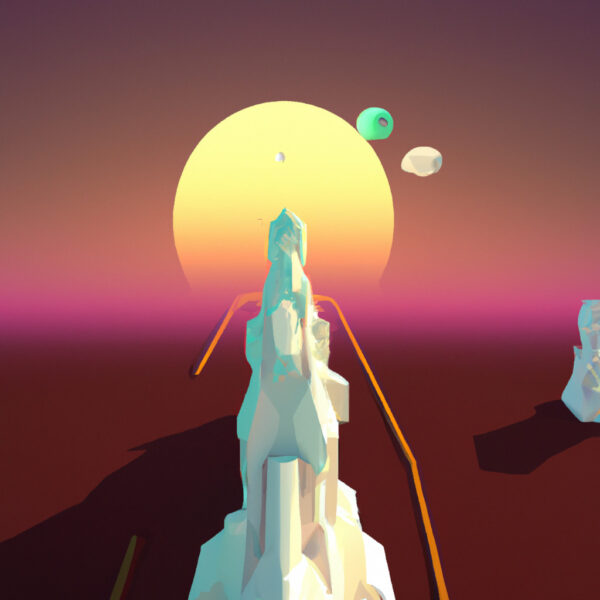Python, being a versatile language, is widely used in various fields, including data analysis and visualization. Understanding how to visualize data in Python amplifies your data analysis skills, enabling you to extract meaningful insights from raw, cluttered data. This article will guide you through the intriguing world of data visualization in Python, narrating why it’s essential, how it’s done, and leading you to the best learning resources.
Table of contents
What is Data Visualization in Python?
Data visualization in Python refers to the representation of data in a graphical format. It is a crucial step in data analysis that helps to understand trends, patterns, and to make correlations that are otherwise difficult to grasp from raw data. Python offers a plethora of libraries, such as Matplotlib, Seaborn, and Bokeh, which makes the visualization process intuitive and effective.
By using Python for data visualization, you can create a wide variety of charts and plots including, but not limited to, bar charts, pie charts, scatter plots, and line charts. These tools provide a visual context to data, making the interpreted information more digestible to a broader audience and aiding data scientists and analysts in conveying their findings effectively.
Why Learn Data Visualization in Python?
Immersing yourself in data visualization with Python has numerous benefits:
- Boost Your Resume: Data science is a highly sought-out field, and knowing how to visualize data with Python is a significant skill that can add value to your resume.
- Effective Decision Making: Visual data is often easier to understand and leads to quicker and more efficient decision-making in businesses.
- Insight Extraction: Data visualization in Python can help uncover hidden insights and patterns in the data, which are not readily identifiable in raw, numerical data.
- Broad Application: From industries like healthcare to finance to tech firms, data visualization has broad application, proving its versatility and imperative need.
In the next part of the article, we will discuss how to get started with data visualization in Python and list some high-quality learning resources.
Exploring Python Libraries for Data Visualization
Python provides a wide range of libraries that are designed specifically for data visualization, each with their unique features and use-cases. Let’s briefly explore a few of them:
- Matplotlib: Matplotlib is one of the most popular Python libraries for creating static, interactive, and animated visualizations. It is highly customizable and versatile, allowing you to create a wide range of data visuals with incredible detail.
- Seaborn: Based on Matplotlib, Seaborn provides a high-level interface for creating attractive and informative statistical graphics. It is especially suitable for visualizing complex datasets that require aggregated views.
- Bokeh: Bokeh is perfect for those who need to create interactive and web-ready plots. It can create sophisticated data dashboards and rich visual datasets that can be embedded into web applications.
- Plotly: Plotly provides an interactive, browser-based visualization library delivering high-quality graphics. It’s great for creating 3D plots, contour plots, and network graphs.
Choosing the right library depends on your data visualization goals. The complexity and granularity of the data, along with the intended audience, will often dictate the most effective tool.
How to Get Started with Data Visualization in Python
Embarking on your journey to master data visualization in Python may seem like a daunting task, but fear not! Here are a few general steps to guide your quest:
- Grasp the Basics of Python: Before diving into the visualizations, take the time to understand Python’s basic concepts. Building a strong foundation in Python is crucial for effective data handling and visualizations.
- Get Familiar with Data Structures: Understand the data structures in Python. An in-depth knowledge of lists, sets, dictionaries, and especially dataframes is required for data manipulation and analysis.
- Study Python Libraries: Dedicate time to exploring libraries like Matplotlib, Seaborn, Bokeh, and Plotly. Each library has its own strengths and weaknesses, choose wisely according to your data visualization requirements.
- Hands-on Experience: The most effective form of learning is by doing. Work on various datasets, explore diverse visualizations, and try to make some real-life projects.
Finding a reliable, beginner-friendly learning resource is immensely beneficial to start your learning journey. One such comprehensive resource is Data Science Mini-Degree at Zenva Academy. This mini-degree program has been meticulously designed to aid beginners in their data science endeavors, offering hands-on experience and real-life projects.
Our mini-degree dives deep into the concepts of machine learning, providing a robust understanding of Python, data manipulation, and data visualization. The program adopts a project-based learning approach, which means you acquire practical skills that you can apply immediately in your professional life. You’ll build portfolio-worthy projects as you learn, showcasing your newfound data visualization abilities.
Learning data visualization in Python is a valuable investment in your future. With our high-quality, accessible and engaging Zenva courses, you’re just a step away from becoming proficient in data visualization with Python. Jumpstart your learning journey now!
Learning Resources
Let’s explore some learning resources that you will find incredibly beneficial for understanding and mastering data visualization in Python. The resources are comprehensive, catering to beginners and seasoned learners alike;
The Data Science Mini-Degree – Zenva Academy
The Data Science Mini-Degree offered by Zenva Academy is a vast collection of courses teaching data science with Python. The program encapsulates:
- Python basics leading to more advanced topics.
- Web scraping, data analysis, SQL, and data visualization techniques.
- 16 courses offering a certificate of completion.
- A great opportunity to enhance your resume and job satisfaction.
Intro to Pandas – Zenva Academy
Zenva Academy offers an entire course on Pandas and data visualization titled, Intro to Pandas. The course:
- Brings a basic familiarity with Python and NumPy into play.
- Covers the fundamentals of working with Pandas to clean and manipulate data for analysis.
- Provides flexible learning options suitable for all types of learners.
The Complete Python Data Visualization Course – Zenva Academy
Learn how to plot and display data using three major plotting libraries with Zenva Academy’s The Complete Python Data Visualization Course. The course covers:
- Various types of charts and plots, including column charts, pie charts, line charts, scatter plots, and more.
- Assumes basic to intermediate familiarity with Python.
- A great resource for pursuing a deeper understanding of Python’s data visualization capabilities.
Data Visualization in Unity 3D and EasyAR
This tutorial series by GameDev Academy teaches how to integrate machine learning algorithms and augmented reality (AR) for data visualization using Unity 3D and EasyAR. The tutorial:
- Covers loading a dataset, writing machine learning algorithms in Unity 3D, and visualizing data using Unity 3D.
- Provides step-by-step instructions on setting up the project.
Dimensionality Reduction – GameDev Academy
This tutorial covers the vital concepts of dimensionality reduction as it pertains to data science. A core theoretical topic necessary to unlock the full power of any data science, this tutorial covers:
- Principal components analysis
- linear discriminant analysis
- t-distributed stochastic neighbor embedding
You’ll also explore these concepts as they relate to the MNIST data sets for handwritten digits.
Getting Started with Data Visualization in Python – GameDev Academy
A short introduction into the world of data visualization, this webclass provides a no fuss introduction. Using Matplotlib, you’ll learn in no time flat how to plot both a bar chart and a histogram.
If you’re looking for something that can be done in a short 30 minute sprint, this is the perfect go-to!
Clustering with Gaussian Mixture Models – GameDev Academy
You can’t properly visualize data without understanding analytical foundations – so in this tutorial you can discover a popular method: gaussian mixture models.
Through this course, you’ll discover why data clustering is important, how to work with these kinds of distributions. And – most importantly – how this data clustering works in favor of visualizations when you reach those steps!
Remember that the resource list merely serves as a guide. Each learning journey is unique, and the resources you find most helpful may vary according to your own needs and goals. Happy learning!
How to Visualize Data in Python – Wrap-Up
The world of data is expanding exponentially and the ability to visualize this data is becoming a crucial skill. Making complex data comprehensible opens a plethora of opportunities for businesses, researchers, and developers alike. Mastering data visualization in Python is a valuable tool to have in your arsenal, providing the means to express data in a clear, engaging and understandable format.
We hope that this article has shed light on the importance of learning data visualization in Python and equipped you with a roadmap to get started. Remember, learning is a journey, and every step you take brings you one step closer to becoming an expert.
While this article provides a solid foundation, the journey to mastering data analysis and visualization is best experienced through hands-on practice and commitment. The Data Science Mini-Degree from Zenva is designed to help you through this journey with detailed tutorials, real-life projects, and comprehensive courses.
Let’s not wait any longer! It’s time for you to immerse yourself in the world of data visualization with Python, and there’s no better place to start than Zenva’s Data Science Mini-Degree.
Remember the key to growth in any field is constant learning and application. So, keep learning, keep growing, and step into the thriving domain of data visualization with Python.
Did you come across any errors in this tutorial? Please let us know by completing this form and we’ll look into it!

FINAL DAYS: Unlock coding courses in Unity, Godot, Unreal, Python and more.







